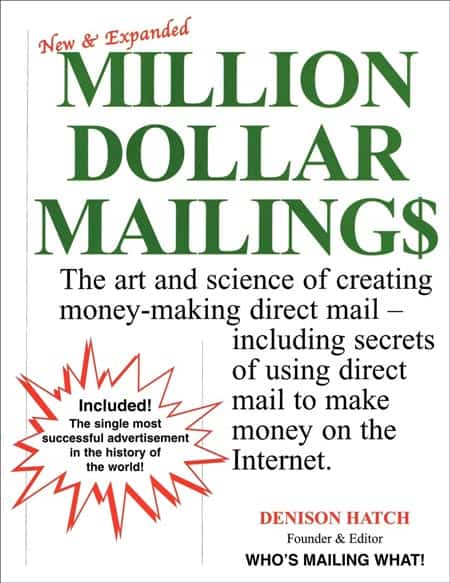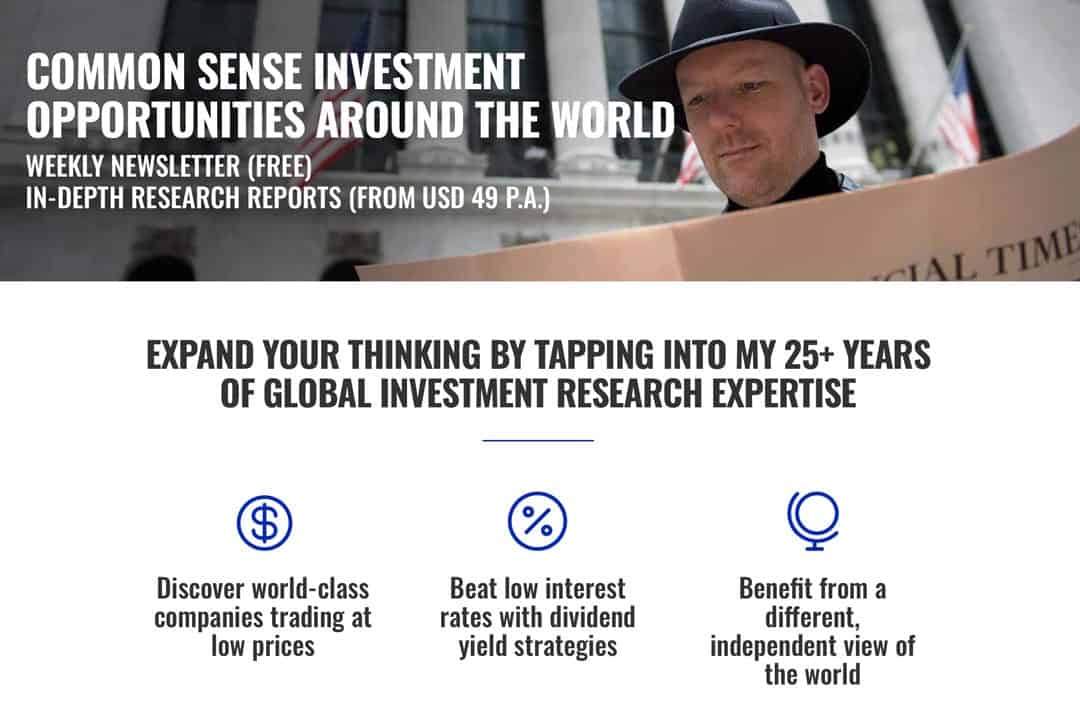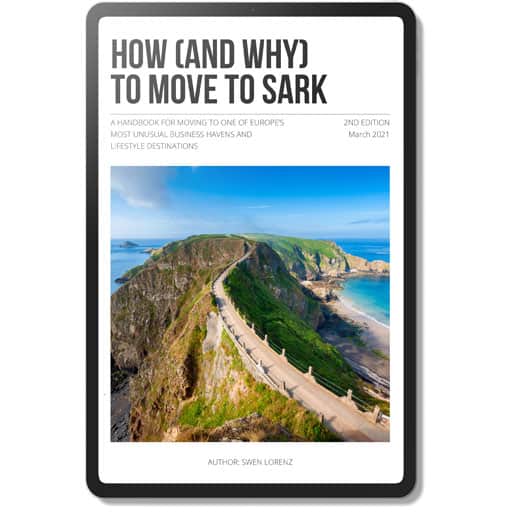What are the two most important words in marketing?
If you have read marketing textbooks, you’ll probably say:
“Free” and “you“.
I won’t argue with “free“. That one wins hands down.
But the second one is dead wrong.
It’s not “you“.
It’s “I“.
Talking about yourself is extremely powerful in marketing. Provided, of course, you know how to do it in the right way. It’s a weapon that few have learned to handle properly.
It will seem counterintuitive to speak about yourself in marketing material; it goes against the teaching of most marketing professors. Isn’t it all about the benefits for the customer?
But I’ve got a billion reasons to back up my claim – literally!
A trick taken from a rare, hard-to-get book
I was inspired to write this article by an ancient tome, a 1992 book about marketing. I first read it right after it came out. My original copy probably ended up in a charity shop, or maybe in the recycling bin. I can’t remember what I did with it. However, it DID leave a very strong impression at the time. I never forgot this particular book, despite the thousands of other books I have purchased since.
A few weeks ago, I decided to check if I could find a copy somewhere.
Lo and behold, it’s not only out of print since 2001. Copies that are available online will cost you three times the price of the original copy. 99% of contemporary books drop in value, while 1% rise in value. Speak of a good indication that a book has stood the test of time.
Here is the ONE lesson you should internalise before the end of today.
It’s a 504-page, 3.3 pound humdinger printed in the format of a coffee table book.
When the package from a small book vendor in Chicago finally landed on my doorstep, I was giddy with excitement.
Purely based on what I remembered, I had already mapped out a plan to write a summary of the book for this blog.
After going through it on a sunny summer afternoon in my favourite outdoor café on Sark, I changed my plan. Rather than giving you a summary of the entire book, I have distilled its key aspect.
Here is the ONE lesson you should internalise before the end of today.
Turn yourself into a major selling point
Successful marketing requires the following three (not so secret) steps:
#1: Reaching the right audience.
#2: Making your audience an offer that is important to them.
#3: Getting your prospective customers to feel good about doing business with you.
The first two points are obvious and straight-forward. That’s what the conventional marketing experts dwell on.
It’s the third one that gets neglected.
You have to get your target audience to feel good about you. Your audience has to take you at your word. Believability is the key to (your) success.
How can you overcome consumers’ scepticism, and make them truly believe in what you are telling them?
By sharing your personality with them!
Injecting your personality into your marketing will create tremendous believability.
Obviously, this also requires having a product or service that you can endorse with authenticity and passion. The vast majority of people see right through hype and fakery. If what you present to them is just that, they will spot it. You need to have a product or service that has some substance, and which – as a result – you are happy to put your name to.
Once you’ve got that kind of product or service to offer, you can add that all-important layer of making your prospective clients feel that they are dealing with a real person.
Someone created a term for it: “Reflexive personalisation“. The term refers to giving your product or service personality by using a real person or situation.
Who doesn’t love walking into a shop where they are greeted by a well-liked, trusted shop owner?
Your marketing has to emulate a corner shop that people walk into, and where they have known and respected the owner for years.
Whatever marketing material you create, it has to make people feel that an actual human being communicates with them – and one that they like.
It doesn’t matter whether you operate a website, run a TV ad, or send out old-fashioned sales letters.
People need to SEE THAT PERSON in their mind.
When someone receives marketing communication from a real person, it closes the loop (and then, the sale).
Someone created a term for it: “Reflexive personalisation“. The term refers to giving your product or service personality by using a real person or situation.
Interestingly, Google only comes up with a handful of search results for the term. In order to dig into it, you need to buy a copy of the book I mentioned and make it to page 196.
If you do, you’ll get to read about the person who used this method to become a self-made billionaire. That’s billionaire with a “b”, not millionaire with an “m”.
Enter Bill Bonner
Chances are that you have already received marketing communication from Bill Bonner, without even realising. Nowadays, most of his company’s marketing materials are signed off by other people.
Bill is the principal owner of Agora Inc. in Baltimore. The company’s website describes itself as “one of the largest and most successful consumer newsletter publishers in the world“.
Don’t be put off that the example relates to information products, and that the book I quote from stems from a period when printed sales letters were a powerful marketing tool. The psychology behind it works in any industry and any media, and in any era.
Agora Inc. is privately owned and doesn’t publish any figures.
However, even a decade ago, it was already an open secret among newsletter publishers that Bill’s marketing genius had turned him into a self-made billionaire.
You can go back to the early 1990s to check on some of the early indications of his success.
When the book that I am writing about first came out, it already mentioned Bill’s company turning over USD 80m per year.
Newsletter publishers generally earn double-digit profit margins on their revenue. At the time, the company probably had a 10% to 20% revenue margin.
Even 30 years ago, Agora Inc. was already minting money for its owner.
During the early 2000s, Bill switched his operation to email. The Internet made his company take off in ways even Bill himself probably would never have expected. I came across one figure from 2015 that spoke of USD 500m in annual revenue; and I know that since then, Agora has only spread its tentacles further.
There is probably hardly anyone else alive today who knows more about building an audience and making it buy than 71-year old Bill Bonner.
It’s been a few years since I last spotted Bill walking down a street in London’s Kensington (we lived in the same neighbourhood for a while). Based on industry gossip, I guess that his global publishing empire nowadays generates annual revenue in excess of a billion dollars, and an insanely high margin.
I know of individual newsletter authors working for Bill who currently measure their personal (!) annual (!!) earnings in the millions; and in at least one case, the tens (!!!) of millions. If that’s what the authors earn, go figure what the owner of the company makes.
How did Bill succeed?
Crucially, he perfected the use of “I” in marketing, rather than slavishly emulate his competitors and focus on the “you” (though he did always use the indisputably effective “free“).
Bill and his colleagues used “reflexive personalisation“, which you only get to read about in the 1992 book “Million Dollar Mailing$” by Denison Hatch.

The book in question (available in several editions through www.abebooks.com).
The all-important excerpt
Instead of trying to rephrase someone else’s thoughts, I’ll simply give you the relevant excerpt from the book.
“Another kind of personalisation is not accomplished by technology, but found within the copy. An example is the personalised thank-you letter from Bill Bonner of Agora Marketing. … In the course of the letter Bonner writes:
“Our company specializes in two areas – investment and travel. To a large extent, these areas reflect my personal interests. Perhaps you share these interests. If so, please allow me to take a moment more of your time to tell you about an organization I am involved with called The Passport Club. It’s a very useful group that appeals to both my desire to travel and my interest in financial topics. …
In short, I have found membership in the club to be a source of a lot of fun as well as a lot of profits. …
And please do not hesitate to call on our TOLL-FREE customer service line (800) 433-1528 if there is any problem. If the product you’ve purchased, or anyone in my organization fails to meet with your complete approval, I would like to know about it.”
What Bonner does is inject himself personally into the correspondence with the new subscriber.
It’s obvious that Bonner:
- Is a real person,
- Cares about excellence and customer satisfaction,
- Loves to travel,
- Loves what he does,
- Is delighted to communicate that enthusiasm and share the benefits.
You are made feel that a real person has communicated with you; Bonner has created a mental image of himself as, perhaps, a boulevardier sipping an aperitif in a Parisian café or an amateur archaeologist in Indiana Jones hat and hiking boots prowling the ruins of Petra.
I call this “reflexive personalization” whereby the writer’s personality comes through.
The result: tremendous believability.
When a letter comes from a real person – and you can see that person in your mind – it closes the loop. Use Reflexive Personalization and there may not be any need to spend a lot of money on elaborate computer work; the intimacy is there thanks to the copy, not the technology.”
Another successful marketing expert, Richard Armstrong, put it as follows:
“What makes a letter seem “personal” is not being battered to death with a never-ending attack of “You’s”. It is, rather, the sense that one gets of being in the presence of the writer… that a real person sat down and wrote you a real letter.”
You may ask, though: “How do I apply 1990s sales letter techniques to 2020s online marketing?“
It’s simple.
I have shown as much with my own commercial website, and you can learn from what I’ve done.
A real-life example of utilising reflexive personalisation
I first met Bill Bonner in Paris in 2003. I was planning a particular kind of investment newsletter and wanted to pitch the idea and make it a joint undertaking. His response: “Been there, tried it seven times, it always failed.“
My reaction: “I’ll prove you wrong. Let me have a go regardless.“
Proving him wrong I did, and our joint product turned into a success that eventually spanned the UK, the US, and Germany.
The lessons that I’ve learned from working with Bill never left me. All that old wisdom came in handy when I relaunched my former investment website, Undervalued-Shares.com.
It’s a website I had operated until 2011. I subsequently had to abandon it, because life and other obligations got in the way.
Since its relaunch in December 2018, the website has turned into an incredible success story. Its metrics have gone gangbusters, and it has become (quite frankly) a money-spinner.
How did I do it?
By talking about myself. Because I had learned to do so – from Bill Bonner.
Undervalued-Shares.com is such a success because I have incorporated the “I” besides the “free“. There is also a lot of “you“, but that only comes in the #3 spot.
The website conveys a lot about myself. Here are some of the marketing techniques I’ve applied:
- Put your face and personality to the product. You can’t make yourself more real than putting a recognisable photo of yourself onto your website’s homepage. I’ve lost some of my privacy as a result, as readers recognise me in the street and hit me up – but that’s fine with me. When I read other blogs, I often notice the owner hiding behind a company name. They are missing a trick in marketing.
- Tell very personal, warts-and-all stories about your life. I recently published “The 10 worst mistakes of my investing career“. That was a raw, painful article to write, and I hesitated to put it out on the web for everyone to see. But it was HUGELY popular with my readers, all the more because they sensed that I shared raw emotions. Again, it was about “I” first and foremost. I had nothing in particular to sell when I launched the article, but I subsequently noticed an uptick in demand for one particular premium product – one that my readers buy because they want to establish a closer connection to the author.
- Let your audience ride on your coat tail. My readers learn about the investments I make, they get to hear about my view of life, the universe, and everything, and they can even join me on some of my travels.
Me, myself, and I.
There is a lot about that on Undervalued-Shares.com. And it works, as far as marketing is concerned. I would have done it like that anyway, because it’s the kind of person I am and it all comes together to the kind of product I enjoy creating on an ongoing basis. But it also happens to be perfectly in line with the marketing dictum developed by Bill Bonner.
Remember this – your customers want to buy from a real person
The underlying principle of reflexive personalisation works for any sector, product or service, and across all media.
I once saw someone turn around a deadbeat hotel by making himself the face, life and soul of that hotel. You didn’t go there to get a bed, but because you wanted to bask in the aura of the general manager. Pricing was secondary and the rack rate was way overpriced. It worked! (The person in question is probably reading this article and will recognise himself. Hey, V.!)
The details of applying this approach will of course differ from case to case.
What doesn’t change, however, is that people want to buy from other people.
Be a real, genuine, and tangible person.
Then do all the other conventional marketing stuff on top of it.
This combination will be the most powerful marketing technique you have ever used.
Be a real, genuine, and tangible person.
Besides, it’ll also keep you on your toes. By establishing a genuine connection with your clients, you establish a level of accountability that other companies cannot compete with. This will be painful on some occasions but pay dividends in all sorts of ways – not just financially.
You’ve just seen it all in action!
Ultimately, this article also shared a very personal experience with you.
That, my friends, is reflexive personalisation. It’s a lesson I had long wanted to share with you.
You can apply this method for the rest of your professional life. It will have cost you nothing to learn about it, but could increase your financial success by a mile – Bill Bonner-style!
If you liked this article, you will probably also enjoy:

Looking for clever ways to invest your hard-earned cash?
Head over to my investment website Undervalued-Shares.com for common sense investment opportunities from around the world. Ideas that you won’t find anywhere else!
Want to print this article? Open a printer friendly version.
Did you find this article useful and enjoyable? If you want to read my next articles right when they come out, please sign up to my email list.
Share this post:


